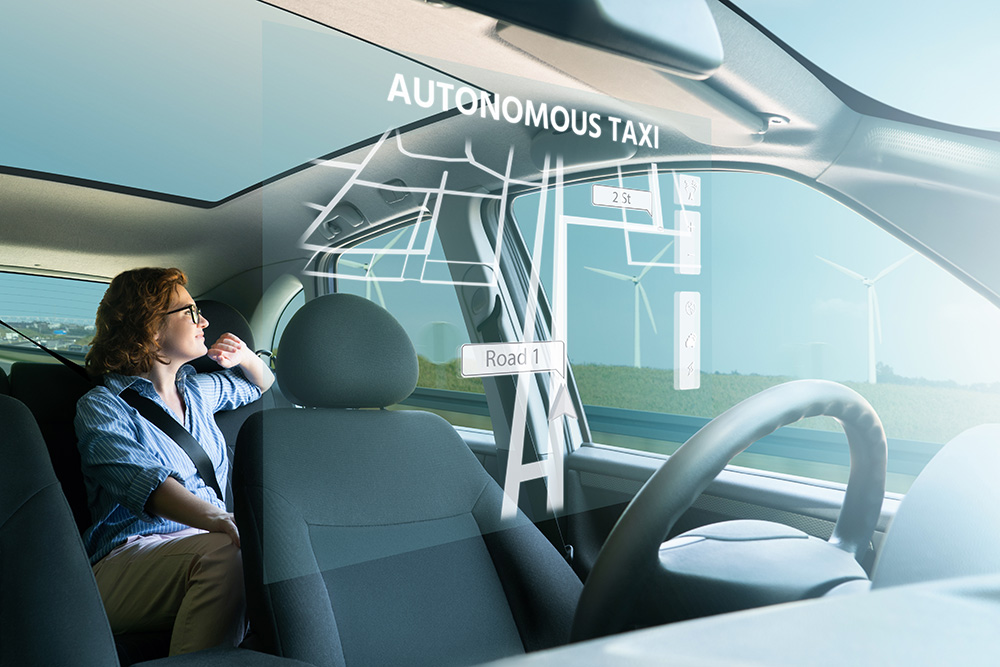Autonomous vehicles might have been a work of fiction in the past, but recent technological advancements in AI, sensors, LIDAR and radar have quickly made them a reality today. Although AVs have been growing in acceptance, there are still areas of concern that challenge the growth potential and adoption of AVs. Key challenges include
– Safety and road-worthiness of AVs
– Regulations and frameworks for the development and implementation of AVs
– Connected infrastructure and high-speed network for fast data processing and sensemaking of complex driving environments
– Data privacy and security of AV systems
Autonomous transportation is not new. Depending on how it is defined, the autonomous spectrum can range from driver-enabled, partially automated to fully driverless. Are people ready to embrace autonomous vehicles (AVs) on the road?
Not quite, though some may say it is possible a few years down the road. Even with the growing potential of AVs to improve road safety, reduce congestion and provide a greener means of transport, concerns about regulation, safety and efficiency are holding some back.
On the whole, AVs are slowly gaining public acceptance. In fact, a 2018 Ipsos’ study1 of over 21,500 global respondents from 28 countries revealed that fifty-eight percent expressed although they were unsure about self-driving cars for various reasons, they were intrigued by the idea of self-driving cars; while thirty percent are in favour of self-driving cars and can’t wait to use them.

Computers have consistently been shown to make fewer errors than humans when driving. So you can be certain that while autonomous cars may not be perfect, they are less flawed than human drivers, who are prone to poor judgement and driving behaviours.
Driverless vehicles are powered by autonomous software and algorithms designed for human-like driving – without the errors. ST Engineering’s autonomous mobility solutions, for instance, are equipped with multiple fail-safe features to ensure high road awareness and that no hazards on the roads go unnoticed.
AVs leverage artificial intelligence (AI), data and video analytics, sensors, radar, LIDAR and high-speed connectivity to make sense of the complex and dynamic driving environment and ensure safe driving under challenging driving conditions.
AV systems rely heavily on AI to process a vast amount of data efficiently to train the autonomous driving systems. It needs to recognise every object and environmental variable the AVs can encounter in real-world scenarios and respond safely to all situations on the road.
Around the world, extensive testing in various environments are driven by collaborations among industry partners and the public sectors. These have helped to validate AV systems and designs, as well as develop new standards and regulatory frameworks to keep up with the safety requirements in the fast-evolving AV industry.
Without a regulatory framework to govern the safe use of AVs on public roads, autonomous cars might be treading uncharted territory.
According to the 2020 Autonomous Vehicles Readiness Index (AVRI) by KPMG2, which looks into the level of preparedness of AVs across 30 countries and their jurisdictions, Singapore claims the top position in the index. It has taken a number of significant steps to encourage and accelerate the testing, development and adoption of AVs, and has led in the area of policy and legislation.
Singapore has published a set of provisional national standards, known as the “Technical Reference 68” (TR 68)3, to guide the industry in the safe development and deployment of fully autonomous vehicles by developing standards covering four key areas: vehicle behaviour, vehicle functional safety, cybersecurity and data formats.
According to the AVRI, Australia received the highest score for its AV regulations. Its federal government takes the early step to reform driving laws to enable the use of AVs, and this work is continuing through the country’s National Transport Commission’s Automated Vehicle Program.
Although more countries have started to put in place the necessary regulations and frameworks to ensure the strategic development and safe operations of AVs, more still needs to be done to constantly review and ensure these are up to date and relevant to changing technologies and the operating environment of the AVs.
As more AVs go on the road, Vehicle-to-Everything (V2X) technology is the future of autonomous driving. It is essential to enable AVs to communicate with each other and the infrastructure (e.g. traffic lights, street lights and other road fixtures) to enhance the AVs’ environment awareness, making autonomous driving safer and more efficient.
Having a high-speed network such as 5G will also have a major influence on the development of AVs. Although 4G is deployed for AV pilots and operations in some cities, it may not be optimised to realise the full capabilities of the AVs.
AVs use hundreds of sensors to generate a huge amount of data that requires fast processing and analysing capabilities. Fast data connectivity will enhance the capability of AVs to closely simulate human-like reflexes and ensure AVs are smarter and safer on the road.
When AVs are more intelligent and connected, sharing everything from sensitive location and environment data may make AV systems become targets for hacking. Other concerns such as data privacy will also need to be addressed. Countries will need to put in place good cybersecurity practices and countermeasures, as well as legal regulations to protect data access and usage.
Whether it is building the infrastructure, enhancing connectivity, advancing AV technology or securing the systems and data, all these require strong collaborations between private and public stakeholders to make AVs a widespread reality.
As more countries get their cities “AV-ready” to capitalise on the benefits of autonomous vehicles, the push for AVs especially for shared public transport and other logistics deployments to meet growing urban mobility needs, is expected to shift into high gear within the next 10 years.
Learn more about ST Engineering Autonomous Transport Solutions
Contact us